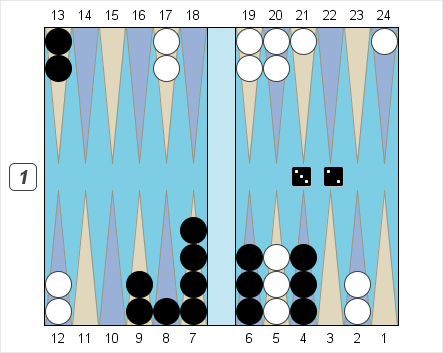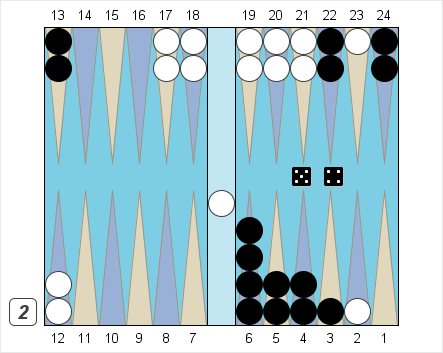Cash game. White owns the cube.

Part (A): White on move. White to play 2-2.

Part (B): Black on move. Black to play 4-2.
Back games are among the most interesting, and the most difficult, of backgammon game types. In a true back game, one player makes two or three points in his opponent’s home board, then hopes to hit a shot and contain a checker as his opponent bears off. If he’s succeeded in maintaining his timing (that is, he can still build a containing prime on his side of the board), and can hit an enemy checker soon enough (before his opponent can bear off too many men), then he may have good winning chances. If not, he may be reduced to a desperate struggle to avoid a gammon.
That’s the theory, anyway. In reality, back games can take a lot of different forms, each with its own unique set of problems.













